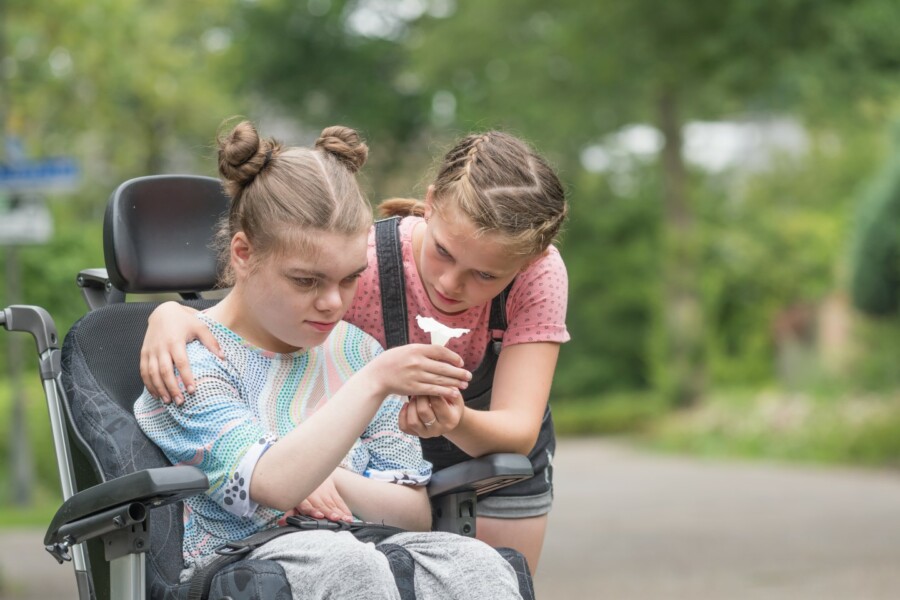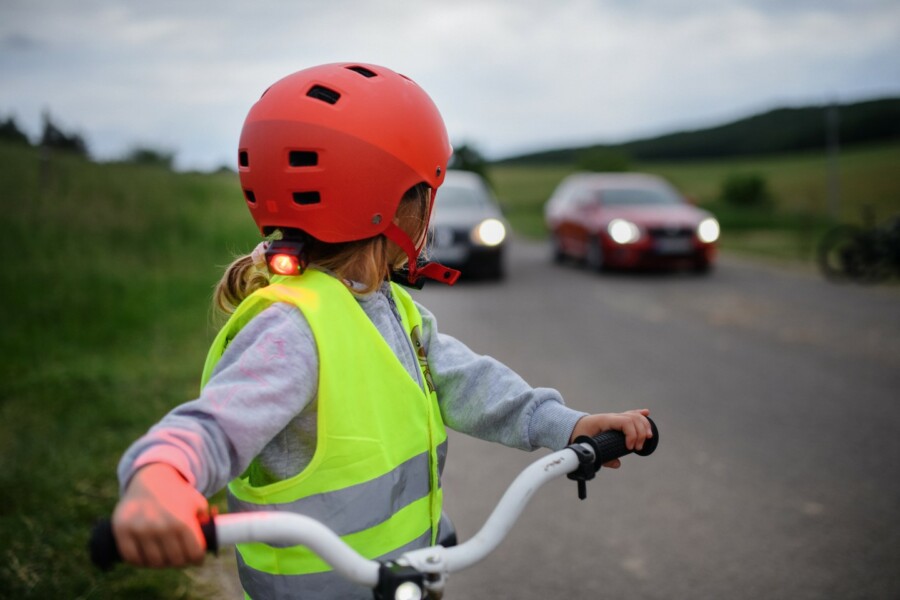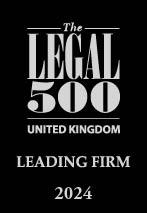Contributory negligence in child brain injury claims
In some circumstances, an injured child can be held to be partly responsible for an accident in which the child suffered a brain injury. This is known as contributory negligence and can have consequences in terms of the amount of compensation awarded to the child.
Any discussion about contributory negligence in the context of child brain injury claims is essentially a discussion about children being knocked over while crossing the road. As a personal injury solicitor specialising in child brain injury claims, all of my clients currently fall into this category. It is a depressingly common scenario.
In this blog I will discuss some of the issues that are relevant when assessing the liability of a child, where they have suffered a brain injury while crossing the road.
Liability – Who is responsible for the accident?
Often the driver of the vehicle is found to be primarily responsible for the accident [1]; however, the child may also be partially to blame. If the child’s own actions are deemed to be negligent and these actions contributed to the accident, liability will be apportioned between the driver and the brain injured child.
Apportionment of liability and the impact on a brain injured child’s compensation
If liability is apportioned between the car driver and the brain injured child, this will result in a proportion of the child’s compensation being deducted to reflect the child’s own negligence in causing the accident. The court could, for example, decide that the driver and the injured child were equally to blame for the accident, in which case the child would lose 50% of his/her compensation.
Relevant factors when assessing liability in child brain injury cases
The child’s age will be an important factor in assessing contributory negligence. The child will be judged against the standard expected of a child of the same age, intelligence and experience [2].
Very young children cannot be considered negligent in causing an accident as they are too young to be expected to take precautions for their own safety. They are not deemed to have the same road sense or experience as adults [3]. The older the child, the higher the responsibility on the child for his/her own safety.
Other relevant factors include:
- Where the accident occurred – if near a school, playground or bus stop, the driver will be expected to take extra precautions;
- The Defendant’s speed;
- Whether or not the child was visible or ought to have been visible to the Defendant prior to the accident, and at what point;
- Whether the child moved suddenly into the path of the Defendant’s vehicle; and
- Whether or not the Defendant could have avoided the accident.
This is not an exhaustive list, but the answers to these questions will help the court to determine the level of contributory negligence, if any, which attaches to the child. It may be necessary to obtain expert reconstruction evidence to assist the court in determining these points.
Case law
In order to provide my clients with advice in respect of liability and contributory negligence, I review past case law. It is usually impossible to find a case with identical facts, but by examining decisions made in cases with similar facts, it is possible to give clients advice about liability and contributory negligence where a child has suffered a brain injury in a road traffic accident.
I have listed some of the cases that I recently consulted in assessing liability for a 14 year old who was knocked over while running across a road to catch a bus. This summary will give parents some idea of the types of decisions made in these cases, although it must be emphasised that each case will be determined on its own facts.
Paramasivan v Wicks [4]
The Claimant, who was 13 years old at the time of the accident, threw an ice cream at a friend and then ran into the road. The Defendant was travelling at 25mph in a 30mph zone. The Defendant had not noticed the Claimant and friends prior to the accident, at the side of the road. On appeal, it was felt that 25mph was a reasonable speed; however, the Defendant ought to have seen the Claimant and friends on the pavement, and was in breach of duty in not doing so. Liability was apportioned on a 75/25 basis in the Defendant’s favour which meant the Claimant only received 25% of his compensation.
Toropdar v D (a minor) [5]
The Claimant, who was 10 years old at the time of the accident, suffered serious brain injuries in an accident while crossing the road. The Defendant was travelling at 27.5mph at the point of impact. The Claimant had been playing with a group of friends outside an Education Centre adjacent to a bus stop, where there was a stationary bus. The Claimant and his friends ran diagonally across the road in front of the bus and into the path of the Defendant. Evidence from the accident reconstruction experts revealed that had the Defendant carried out precautionary braking, the accident would either not occurred at all or the Claimant’s injuries would have been minor. The experts were also of the opinion that had the Defendant been driving at 20mph, and carried out precautionary braking, he could have stopped his car and a collision would have been avoided. Therefore, it was found that the Defendant was driving too fast in the circumstances and he should have anticipated the possibility of the Claimant and his friends entering the road into his path. Liability was apportioned on a two thirds, one third basis in the Claimant’s favour which means that the Claimant lost a third of his compensation.
Armstrong v Cottrell [6]
The Claimant was 12 years old and was trying to cross a busy road with a group of friends. The Defendant saw them hovering by the side of the road. The Claimant hesitated in the middle of the road and then darted into the Defendant’s path. It was held that the Defendant should have reduced her speed to prevent an accident, and sounded horn. On appeal liability was apportioned on two thirds, one third basis in favour of the Claimant.
Grant v Dick [7]
The Claimant was 14.5 years old and was trying to cross the road with a group of 9 friends. It was a bright, clear day and visibility was good. The Defendant saw two of the Claimant’s friends run across the road and the remainder of the group, including the Claimant, plainly intended to cross. The Defendant was found to be driving too fast in the circumstances and because he had seen the Claimant’s friends cross the road, he should have anticipated that the Claimant would cross and reduced his speed and sounded his horn. Liability was apportioned on a 60/40 basis in the Claimant’s favour.
Rainford v Lawrenson [8]
The Claimant was aged 14 years old when she suffered a serious brain injury in an accident while crossing the road. She was with a group of friends and was attempting to reach a bus stop. The road had a speed limit of 60mph. It was 8am and the Defendant was aware that there would be children catching school buses in the area. She had passed children on both sides of the road and was driving at about 34/35mph. The judge found that she was travelling at a reasonable speed for the particular road. However, she was not keeping a proper look out and she should have taken precautionary measures when approaching the bus stop because she should have anticipated that one or more of the children would try to cross the road to get to the bus stop. Liability was apportioned on a 50/50 basis.
Conclusion
I hope that this blog will give the parents some idea of how the court will assess the child’s own liability in situations where the child has suffered a brain injury while crossing the road. There is, however, no substitute for legal advice tailored to the specific accident circumstances, and therefore I would urge any parents in this situation to seek advice from an experienced child brain injury solicitor as soon as possible.
Parents may also be interested in my blog discussing some of the myths surrounding children and road traffic accident compensation claims.
I am a Partner at Bolt Burdon Kemp specialising in Child Brain Injury claims. If you would like advice about making a claim on behalf of a brain injured child, contact me free of charge and in confidence on 020 7288 4854 or at cherylabrahams@boltburdonkemp.co.uk for specialist legal advice. Alternatively, you can complete this form and one of the solicitors in the Child Brain Injury team will contact you.
[1] Eagle v Chambers [2004] RTR 115 – The court emphasised the high burden that was on drivers, to reflect the fact that the car was potentially a dangerous weapon. Car drivers, said LJ Hale, had to be on the lookout for pedestrians in the road. The assumption will be that the car driver is primarily at fault.
[2] Mr Justice Owen in McHale v Watson [1996] 115 CLR 199
[3] Lord Denning in Gough v Thorne [1966] 1 WLR 1387 where he said that: “a judge should only find a child guilty of contributory negligence if he or she is of such an age as to be expected to take precautions for his or her own safety; and then he or she is only to be found guilty if blame should be attached to him or her. A child has not the road sense nor the experience of his or her elders. He or she is not to be found guilty unless he or she is blameworthy.”
[4] [2013] EWCA Civ 262
[5] [2009] EWHC 2997
[6] [1993] P.I.Q.R. P109
[7] [2003] All ER (D) 400
[8] [2014] EWHC 1188 (QB)









